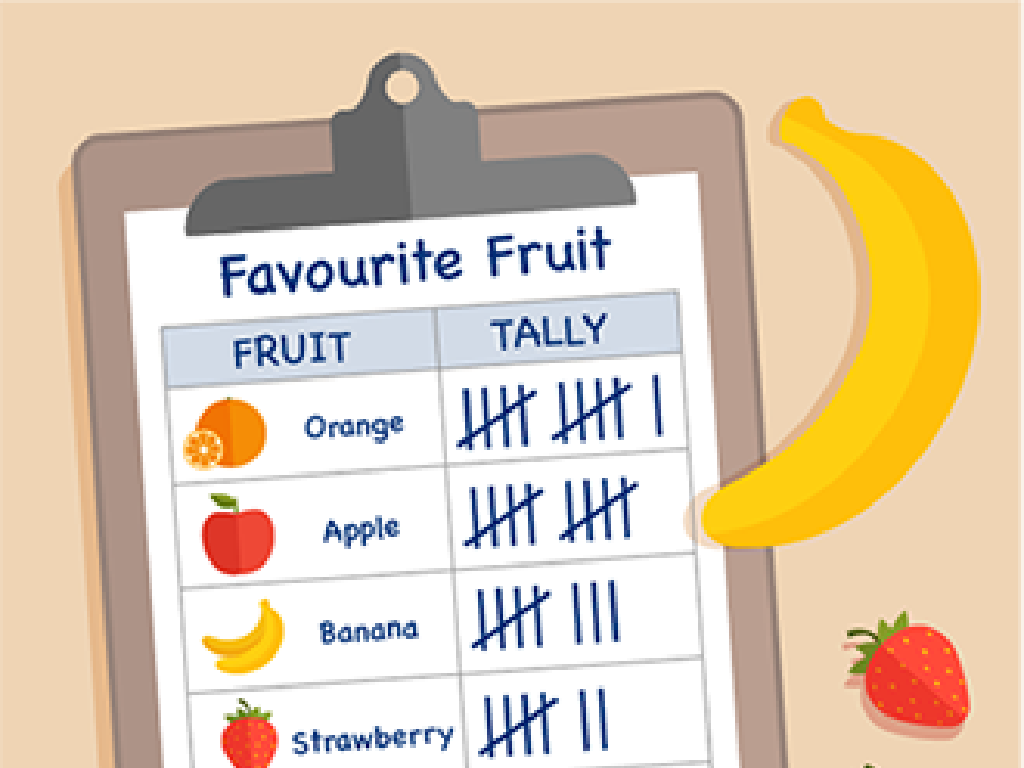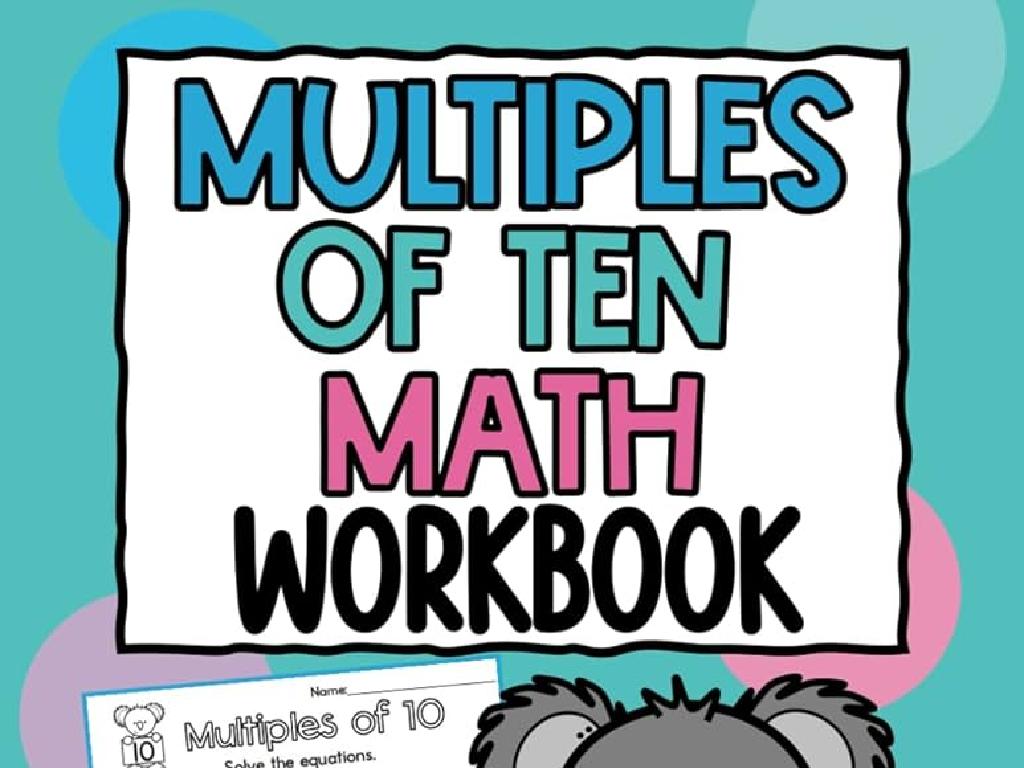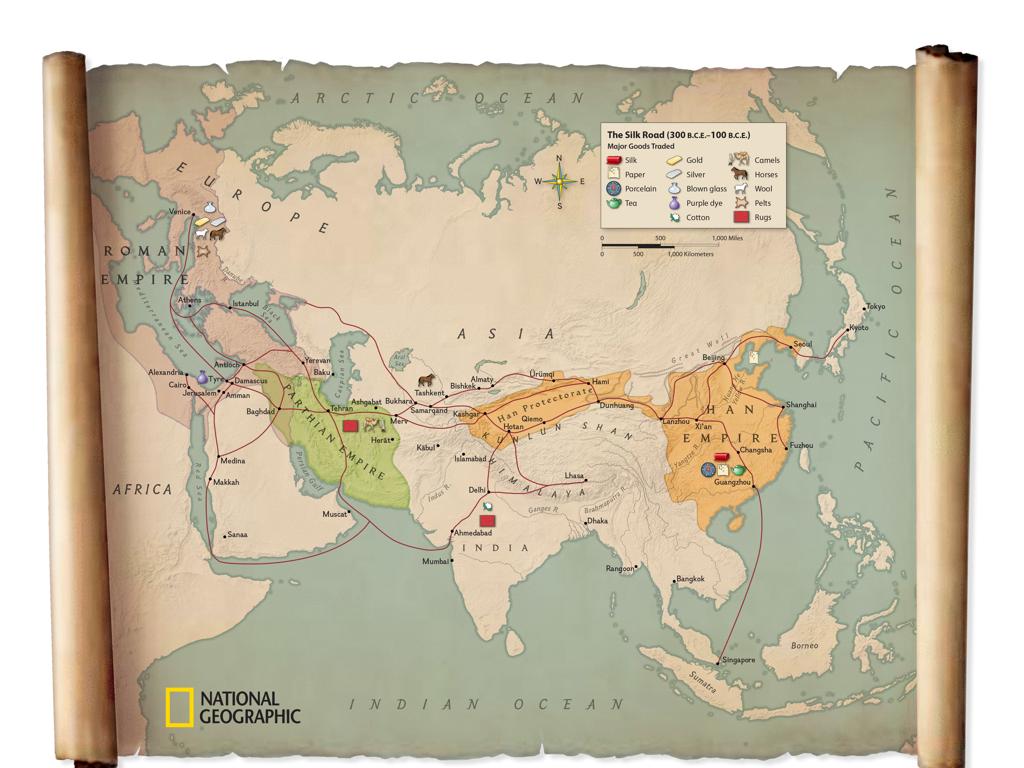Identify Equivalent Fractions Using Number Lines
Subject: Math
Grade: Fourth grade
Topic: Equivalent Fractions
Please LOG IN to download the presentation. Access is available to registered users only.
View More Content
Exploring Equivalent Fractions
– Quick recap on fractions
– Fractions represent parts of a whole
– Understanding equivalent fractions
– Fractions with different numbers but same value
– Using number lines to identify
– Visual method to compare fractions
– Practice finding equivalents
– Find fractions equal to 1/2, 2/4, 3/6 on a line
|
Begin the lesson with a brief review of what fractions are, ensuring students recall that fractions represent parts of a whole. Introduce the concept of equivalent fractions by explaining that they are different fractions that represent the same value. Demonstrate how to use number lines to visually compare fractions and identify equivalency. Provide students with number lines and have them practice finding equivalent fractions, such as 1/2, 2/4, and 3/6, to reinforce the concept. Encourage students to explain their reasoning and how the number line helped them determine equivalency. This activity will help solidify their understanding of equivalent fractions and how to find them.
Understanding Fractions
– A fraction represents part of a whole
– Think of a fraction like a pizza cut into equal slices
– Numerator and denominator explained
– Top number (numerator) shows slices you have, bottom number (denominator) shows total slices
– Example: 1/2 as a fraction
– 1/2 means you have one slice out of two slices
|
Begin the lesson by explaining that a fraction represents a part of a whole, similar to a slice of pizza. The numerator, or the top number of the fraction, indicates how many parts we have, while the denominator, the bottom number, shows how many equal parts the whole is divided into. Use the example of 1/2 to illustrate this concept, showing that if a pizza is cut into two equal slices, 1/2 represents one of those slices. This foundational understanding will help students grasp how number lines can be used to identify equivalent fractions in subsequent lessons.
Understanding Equivalent Fractions
– What are equivalent fractions?
– Fractions that represent the same amount
– Different but same value
– Example: 1/2 equals 2/4 and 3/6
– Visualize: 1/2 and 2/4 both fill half a pizza
– Using number lines to compare
– Draw number lines to show equivalence
|
This slide introduces the concept of equivalent fractions to fourth-grade students. Begin by explaining that equivalent fractions are different ways to write the same fraction. Emphasize that even though these fractions may look different, they represent the same value or amount. Use concrete examples, such as slices of pizza, to illustrate this point. For instance, half a pizza is the same as two quarters of the same pizza. Then, show how to use number lines to visually compare fractions and identify equivalency. Encourage students to draw their own number lines and mark the fractions to see the equivalence visually. This will help them understand that fractions can be equivalent even if their numerators and denominators are different.
Number Lines and Equivalent Fractions
– What is a number line?
– A visual representation of numbers in order.
– Comparing fractions on a line
– Place fractions on the line to see which is larger or if they are equal.
– Identifying equivalent fractions
– Fractions that have the same value but look different.
– Practice with number lines
|
This slide introduces the concept of using number lines to understand fractions, a key skill in 4th-grade math. Begin by explaining what a number line is and how it can be a useful tool for visualizing the order and spacing of numbers. Demonstrate how to place fractions on a number line and use it to compare their sizes. Emphasize the concept of equivalent fractions by showing different fractions that represent the same point on the number line. Conclude with an interactive activity where students practice placing fractions on a number line and identifying equivalent fractions. This will help solidify their understanding of the concept through hands-on learning.
Placing Fractions on a Number Line
– Points as fractions on a line
– Each point on the line corresponds to a specific fraction.
– Same numerators line up
– Fractions like 1/3, 2/6, 3/9 share a numerator and can be aligned.
– Practice with 1/2, 2/4, 3/6
– See how 1/2, 2/4, 3/6 all represent the same point on the line.
– Understanding equivalent fractions
|
This slide introduces students to the concept of representing fractions on a number line and understanding equivalence. Emphasize that each point on a number line is a fraction and that fractions with the same value will be located at the same point, even if their numerators and denominators are different. Use the example of 1/2, 2/4, and 3/6 to show how these fractions are equivalent and therefore align on the number line. Encourage students to draw their own number lines and place other fractions to see equivalence visually. This activity will help solidify their understanding of equivalent fractions and prepare them for more complex comparisons.
Finding Equivalent Fractions on Number Lines
– Divide number line into equal parts
– Same point represents different fractions
– Example: Halfway point is 1/2, 2/4, 3/6
– The point at 1/2 also represents 2/4 and 3/6
– Practice finding other equivalents
– Try to find what 1/3, 2/6, 4/8 represent on a number line
|
This slide introduces students to the concept of equivalent fractions using number lines. Start by explaining that dividing a number line into equal parts can help us find fractions that mean the same thing. Emphasize that the same point on a number line can be labeled with different fractions, which are equivalent. Use the example provided to show that 1/2, 2/4, and 3/6 all represent the same point on the number line, which is halfway between 0 and 1. Encourage students to practice with other fractions to find equivalents, such as identifying what 1/3, 2/6, and 4/8 represent on a number line. This hands-on activity will help solidify their understanding of equivalent fractions.
Activity: Create Your Number Line!
– Draw your own number line
– Mark 1/3, 2/6, 4/12 on it
– Label each fraction correctly
– Explain why they’re equivalent
– Use the number line to show equal spacing between these fractions
|
This activity is designed to help students visually understand the concept of equivalent fractions using a number line. Students will draw a number line and mark the fractions 1/3, 2/6, and 4/12 on it. They should label each point and then share with the class why these fractions represent the same value. For the teacher: Prepare to guide students on how to evenly space fractions on a number line and how to check for equivalency by multiplying or dividing the numerator and denominator by the same number. Have additional examples ready for students who finish early, and be prepared to assist students who may struggle with the concept. Encourage students to use multiplication and division to find other equivalent fractions for these numbers.
Class Activity: Fraction Number Line Race
– Pair up and draw a number line
– Mark fractions from 0 to 1
– Find and label equivalent fractions
– For example, 1/2 is the same as 2/4 on the number line
– Get ready for a class review!
|
This activity is designed to be a fun and interactive way for students to practice identifying equivalent fractions using number lines. Students will work in pairs to draw a number line from 0 to 1 and then challenge each other to find and correctly label as many equivalent fractions as possible. This will help reinforce the concept that different fractions can represent the same value. After the activity, we will review the answers together, allowing students to discuss and correct any misconceptions. Possible variations of the activity could include using different ranges on the number line, timing the challenge for added excitement, or having students explain their reasoning for each equivalent fraction they find.
Conclusion & Reflection on Equivalent Fractions
– Congratulations on mastering equivalent fractions!
– Knowing equivalent fractions is useful in math and daily life
– Reflect on what you’ve learned today
– Think about how you used number lines to find equal fractions
– Share your new knowledge with the class
– Did you learn about halves, thirds, or fourths? Let’s discuss!
|
As we wrap up today’s lesson on equivalent fractions, take a moment to celebrate the students’ hard work and understanding. Emphasize the importance of equivalent fractions in various aspects of math, such as simplifying fractions, and in real-world situations like cooking or dividing things equally. Encourage students to reflect on their learning process and invite them to share any ‘aha’ moments or new insights they’ve gained. This reflection helps to reinforce their knowledge and allows you to assess their understanding. Possible sharing prompts could include: how they felt about using number lines, any strategies they found helpful, or how they might explain equivalent fractions to a friend.





